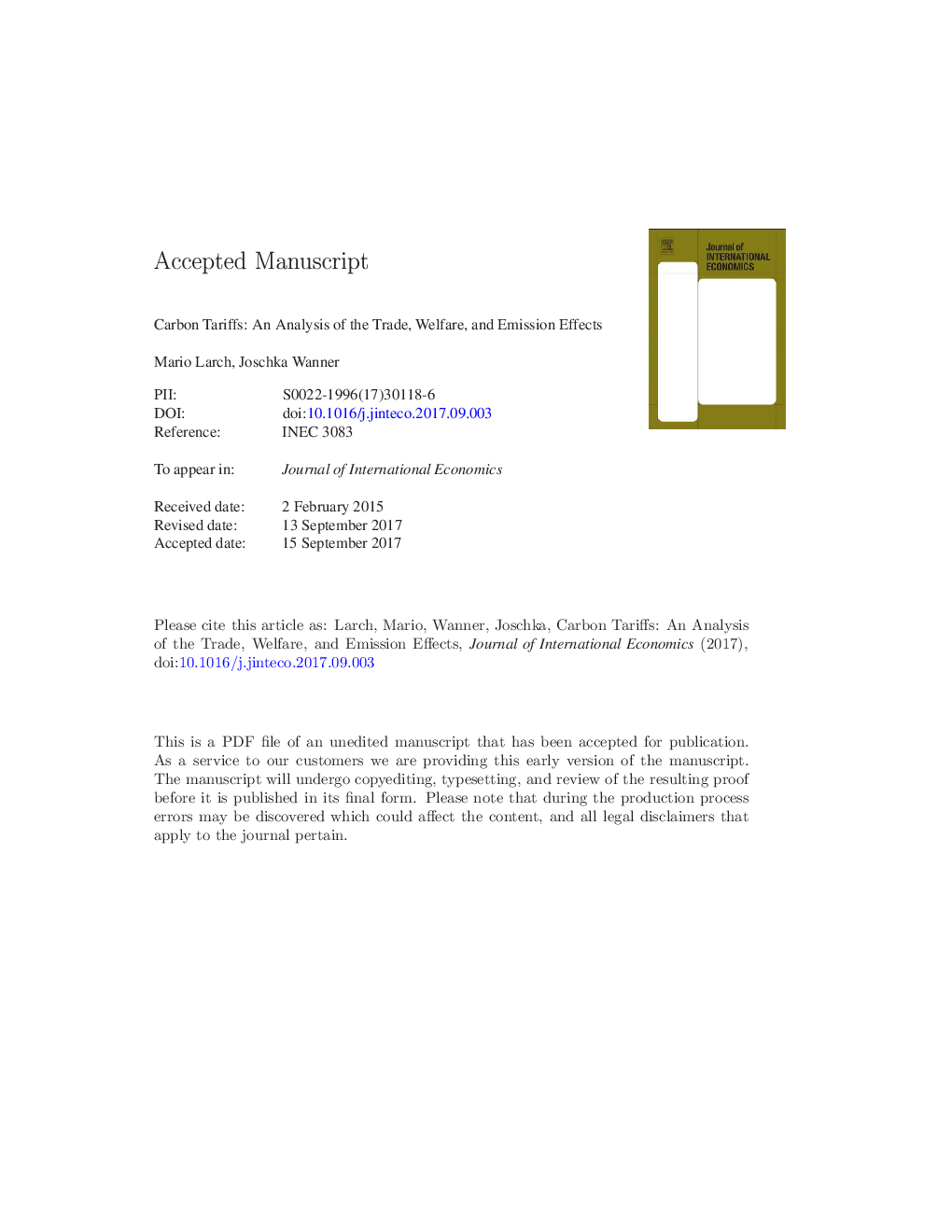| Article ID | Journal | Published Year | Pages | File Type |
|---|---|---|---|---|
| 7363978 | Journal of International Economics | 2017 | 149 Pages |
Abstract
The potential of carbon tariffs to restore competitiveness, avoid carbon leakage, and reduce global carbon emissions has been prominently discussed. To analyze the effects of carbon tariffs on trade, welfare, and carbon emissions, we develop a multi-sector, multi-factor structural gravity model that allows an analytical and quantitative decomposition of the emission changes into scale, composition, and technique effects. Our analysis shows that carbon tariffs are able to reduce world emissions, mainly via altering the production composition within and across countries, hence reducing carbon leakage. This reduction comes at the cost of lower world trade flows and lower welfare, especially for developing countries. Applying our framework to investigate the effects of the emission reduction pledges made by the Annex I countries in the Copenhagen Accord, we find that combining national emission targets with carbon tariffs would increase the Accord's effectiveness by lowering the leakage rate from 13.4% to 4.1% (with bootstrapped 95% confidence intervals of [11.5, 15.8] and [3.3, 4.9], respectively).
Related Topics
Social Sciences and Humanities
Economics, Econometrics and Finance
Economics and Econometrics
Authors
Mario Larch, Joschka Wanner,
